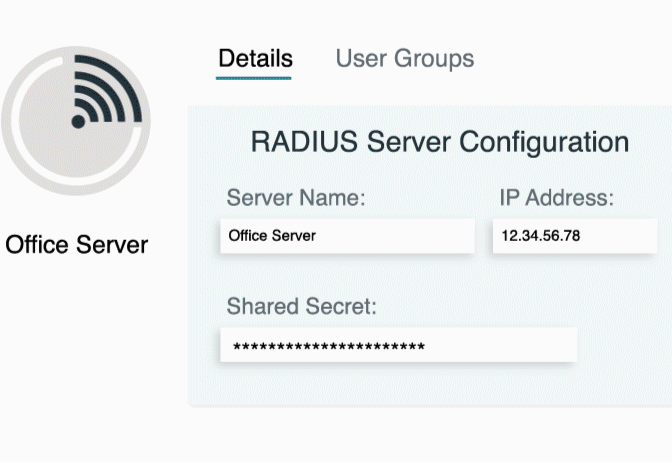Updated on March 7, 2025
One important technique to keep networks stable and efficient is route poisoning. This method prevents routing loops and helps ensure data is transmitted reliably by marking failed routes. In this guide, we’ll explain the basics of route poisoning, its benefits, uses, and potential security impacts.
Definition and Core Concepts
What Is Route Poisoning?
Route poisoning is a method used in distance-vector routing protocols, such as RIP (Routing Information Protocol), to handle failed routes. When a router notices that a route is no longer working—due to a link failure or another issue—it marks the route as unreachable by giving it an infinite metric (typically “16” in RIP).
By advertising these “poisoned” routes, routers stop neighboring devices from using or forwarding traffic through them. This approach is simple but effective, helping to reduce disruptions and keep the network stable.
Why Route Poisoning Is Necessary
Route poisoning is designed to solve a common problem in dynamic routing protocols: routing loops. These happen when outdated or conflicting routing information causes packets to keep bouncing between routers, leading to network congestion and poor performance. Some key benefits include:
- Preventing Unreachable Destinations: Route poisoning ensures that packets are not sent to devices or nodes no longer accessible, reducing wasted resources.
- Minimizing Routing Loops: By advertising failed routes as “poisoned,” routers quickly eliminate the risk of packets being repeatedly forwarded through invalid paths.
How Route Poisoning Works
Understanding how route poisoning functions step-by-step can clarify its role in dynamic routing protocols.
Step 1: Detecting a Failed Route
When a router detects a link failure—caused by hardware issues, software errors, or network congestion—it marks the route as invalid. Modern routers can quickly identify this through link status signals.
Step 2: Sharing the Failed Route
After detecting the failure, the router updates its routing table to show the route is unavailable. It then notifies neighboring routers by assigning the failed route an infinite metric, signaling it can’t be used anymore. For example, in RIP, a metric of “16” means the route is unreachable.
Step 3: Neighbors Update Their Routing Tables
Routers that receive this update mark the route as invalid in their own tables. This stops them from sending packets to the failed route. They then pass on the update to other routers, ensuring the network is aware of the issue.
Step 4: Removing the Route with Hold-Down Timers
To avoid frequent updates caused by rapid link state changes (flapping), the failed route stays in the routing tables for a set hold-down period. Once this timer is up, the route is removed unless the connection is restored.
Key Features of Route Poisoning
Prevents Routing Loops
Route poisoning is primarily used to combat the harmful effects of routing loops. By ensuring that routers do not stick to outdated paths, it keeps the network efficient and reliable.
Fast Failure Notification
Routing protocols that implement route poisoning, like RIP, enable quick dissemination of failure notices. This rapid sharing allows connected routers to adapt and reroute traffic almost immediately.
Works with Split Horizon
Split Horizon is a technique whereby routers do not advertise a route back to the interface from which it was learned. When combined with route poisoning, it further reduces the risk of routing loops, enhancing network performance.
Compatibility with Distance-Vector Protocols
Route poisoning is standard in distance-vector protocols, including RIP and Interior Gateway Routing Protocol (IGRP). These protocols rely on regular updates to share information between routers, making them ideal candidates for this technique.
Security Implications of Route Poisoning
While route poisoning is a powerful tool for improving network stability, it also introduces specific security concerns.
Potential for Misuse
Attackers with access to a network could exploit route poisoning by broadcasting malicious poisoned routes. This can mislead routers and cause prolonged disruptions or even isolate specific network segments.
Impact on Network Stability
Misconfigurations—whether accidental or due to an attacker—can result in unnecessary route poisoning, isolating critical parts of the network. For example, if a manual error sets a route as poisoned without cause, data may fail to reach its intended destination.
Mitigation Strategies
Organizations can mitigate these risks through:
- Authentication: Many routing protocols, like RIP, support MD5 or other authentication mechanisms to verify update legitimacy.
- Monitoring: Advanced monitoring tools can detect unusual advertisements and alert administrators to potential misuse or configuration errors.
- Logging and Incident Analysis: Keeping a detailed log of route advertisements enables administrators to track and resolve abnormalities in real time.
Use Cases in Enterprise Networking
Enterprise networks, particularly those involving complex architectures and redundant connections, benefit greatly from route poisoning.
Network Failure Recovery
When a redundant setup experiences a link failure, route poisoning ensures a swift reroute, minimizing downtime. This rapid response supports business continuity by safeguarding against prolonged disconnections.
Enhancing Routing Protocol Efficiency
Route poisoning works in tandem with mechanisms like Split Horizon and hold-down timers to streamline the convergence process (when all routers share consistent routing information). This reduces the time it takes for networks to stabilize after a topology change.
Preventing Persistent Routing Loops
By labeling failed routes clearly and efficiently, route poisoning eliminates most causes of persistent routing loops. IT professionals can trust that dynamic protocols automatically adapt without manual intervention.
Glossary of Terms
- Route Poisoning: A technique in dynamic routing where failed routes are marked as unreachable using an infinite metric to prevent routing loops.
- Distance-Vector Routing Protocol: A class of routing protocols (e.g., RIP) that determines the best path using metrics like hop count.
- Routing Loop: A network condition where packets circulate endlessly between routers due to incorrect routing information.
- Split Horizon: A method that prevents routers from advertising a route back to the interface it was learned from, further reducing routing loops.
- Hold-Down Timer: A timer used to prevent flapping routes by temporarily disregarding updates about a failed route.
- RIP (Routing Information Protocol): A distance-vector protocol that uses hop counts as the metric for determining route validity and supports route poisoning for stability.






